

Contributor
- Topics: Archive
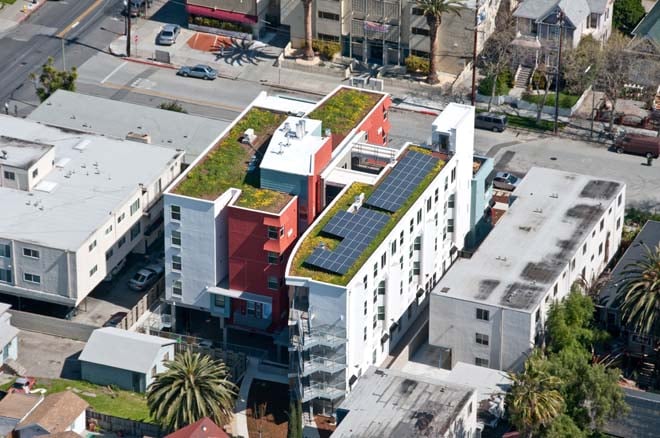
[sidebar]TEAM
Owner/Developer: First Community Housing
Architect: Rob Quigley Architects, FAIA
General Contractor: Branagh Construction
LEED Consultant: Simon & Associates
Green Roof Consultant: Rana Creek
Civil Engineer: Carroll Engineering
Roofing: Tremco
Modular Green Roof System: BioTray
Green Roof Monitoring: Agilewaves[/sidebar]
Replacing an aging residential hotel near downtown San Jose, Casa Feliz Studios was developed in 2009 with 60 new apartments by First Community Housing (FCH). The energy-efficient apartments serve extremely low-income residents—35% with developmental disabilities—and are located in a run-down neighborhood of Victorian houses interspersed with deteriorating 1960’s apartment buildings. At less than half an acre, the tight infill site required a creative and efficient design.
The building’s crowning glory is San Jose’s first green roof, which was engineered to maximize stormwater retention, holding 60 to 80% of rainwater on the roof. Preliminary meetings with the City Public Works Department realized a requirement to replace and upgrade the existing storm sewer to a 100-year flood capacity at an estimated cost of over $300,000. The owner and architect, Rob Wellington Quigley, FAIA, researched using a green roof as a way to mitigate the stormwater requirement. Paul Kephart of Rana Creek provided FCH with design assistance using this “revised” technology.
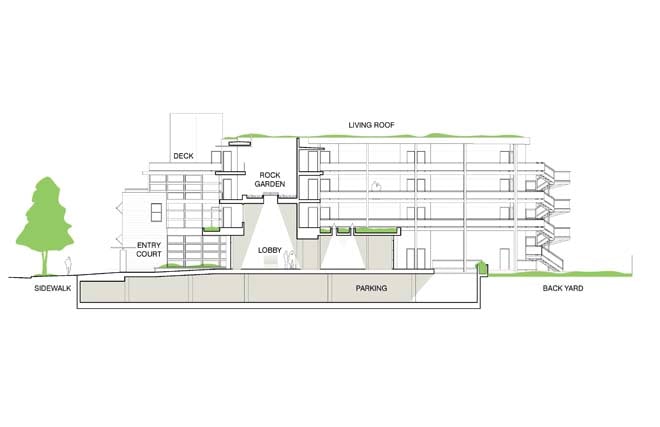
Preliminary analysis showed that the installation of a green roof could reduce the stormwater runoff to such an extent that only a new 10-year event pipe would be required. This could be accomplished at the same cost or less than the 100-year storm sewer “upgrade”. A series of meetings with various city departments was necessary to convince city officials that the green roof could indeed reduce the building’s stormwater runoff.
The high cost of upgrading the insufficient storm drain system made the decision to add green roofs economically feasible, but the green roofs add much more to the building than simple stormwater retention. They provide habitat for wildlife, increased roof insulation and cooling, longer roof life due to the blocking of ultraviolet rays, and reduced ambient heat reflected from the roof (which increases the efficiency of the photovoltaic system). The non-irrigated plantings bloom during the mild winter and spring rain, and die down during the long, warm summers.
The use of organically grown plants and a pesticide-free growing medium protects the quality of any water that percolates into the site or drains into the public storm drain system. The plants are a mixture of annual and perennial sedums, grasses and wildflower species that provide a healthy habitat for birds, insects and butterflies. The plant materials were chosen to thrive in hot, polluted air and shallow soil mixtures. They are typically found in California’s native serpentine grasslands, which feature shallow, nutrient-poor soils.
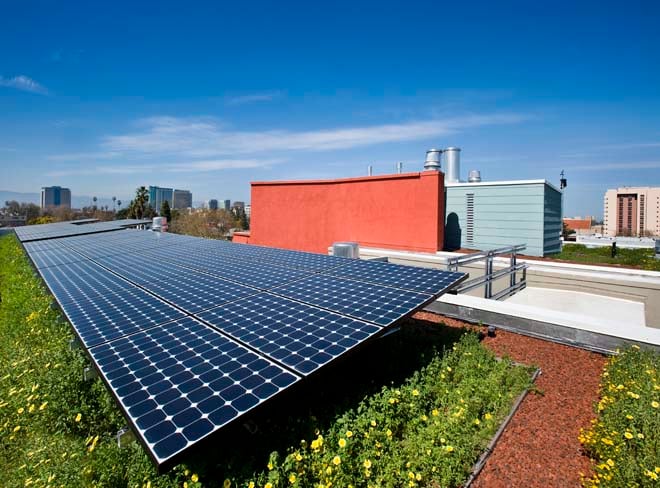
There are five different green roof areas, totaling 5,375 square feet. One is partially covered with photovoltaic panels. The rooftop wildlife habitat is not intended for tenant recreation or public viewing, but three small garden roofs at each upper floor are visible from apartments, hallways and decks, which will display vibrant colors and textures throughout the seasons for the daily enjoyment of building occupants.
Each roof includes a waterproof membrane covered with 3 to 6” of specialized soil mixtures. The upper roofs were planted with scattered seeds. Rana Creek was involved in developing a biodegradable modular planting system made from coconut shells that was used for the project called BioTray. For the lower roofs, the plants were grown at Rana Creek’s nursery and transported to the site in 4” deep BioTray baskets, which provide both erosion control and thermal resistance.
The green roofs at Casa Feliz provide a continuous layer of R-30 insulation over the building spaces below, eliminating the thermal breaks that result in energy losses in standard wood-frame roof assemblies. The mass of the living roof combined with the water retention capacity minimizes “thermal shock” to the building from varying high and low roof temperatures, thereby moderating temperature fluctuations inside the building and reducing the need for heating and cooling. The roof provides free evaporative cooling on hot days and high insulation value on cold days, keeping the roof at a relatively stable temperature.
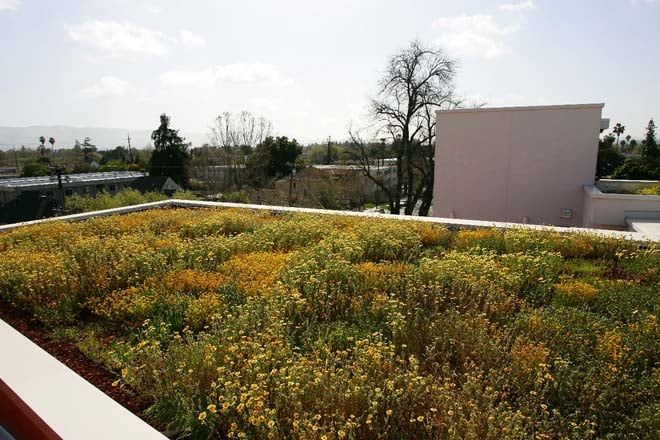
While there are additional costs for installing a living roof, particularly for increased structural load, Jeff Oberdorfer, the executive director at First Community Housing, estimates that it added about half of a percent to the overall construction cost, which was offset by eliminating the required storm drain upgrade.
To track the performance of the living roof, FCH installed an Agilewaves resource monitoring system. A weather station measures rainfall at the site, and water flow gauges at the roof drain measure runoff, enabling the developer to calculate the actual water retention capacity of the living roof and demonstrate the reduced burden on the City’s storm drain system. This performance data will be used to educate the building industry and policy makers about the benefits of green roofs with the goal of encouraging wider spread adoption.
As San Jose’s first development with a living roof, the project acts as a prototype and educational resource for other municipalities, developers and communities. Casa Feliz “has been a model for incorporating water conservation features in affordable housing,” says Oberdorfer. The project team hopes that the success of Casa Feliz’s living roof experience will plant a seed to inspire others to plant their own rooftop gardens.
[sidebar]This article was originally published in the Living Architecture Monitor magazine. To learn more about green roof and wall design, development and research in California, the west coast and across the country, register for CitiesAlive: 11th Annual Green Roof and Wall Conference in San Francisco this October 23 – 26. Join sustainable building professionals and over 95 speakers from various sectors to train, tour, network, do business and elevate the dialogue around ‘securing urban resiliency with living architecture: food – energy – water.'[/sidebar]
CASA FELIZ PLANT LIST
Biotrays
– Sedum ‘album murale’
– Sedum rubrotinctum ‘Jelly Bean’
– Sedum ‘acre aureum’
– Sedum ‘Borshi Sport’
– Sedum spathufolium
– Dudleya ceaspitosa (or) pulverulente
Top level roofs (hand scattered seed)
– Lasthenia californica
– Eschscholzia californica
– Lupinus nanus
– Gilia capatata
– Clarkia amoena
– Trifolium wildenovii
– Castilleja exserta
– Plantago erecta
– Layia platyglossa
Share:
Social Media
Garden Futurist Podcast
Most Popular
Videos
Topics
Related Posts

Low Maintenance Gardens – Better for Pollinators and People
Autumn 2022 “I come out every day. It’s therapy, my meditation.” Janet’s young garden transformed from overgrown, invasive plants to mostly natives. The dailiness of

Invasive Plants Are Still Being Sold: Preventing Noxious Weeds in Your Landscape
Autumn 2022 With so many beautiful ornamental plant species and cultivars throughout California and the Pacific Northwest, how do you decide which ones to include

Garden Design in Steppe with Transforming Landscapes with Garden Futurist Emmanuel Didier
Summer 2022 Listen to full Garden Futurist: Episode XVII podcast here. Emmanuel Didier, Principal and Creative Director at Didier Design Studio is a leading figure
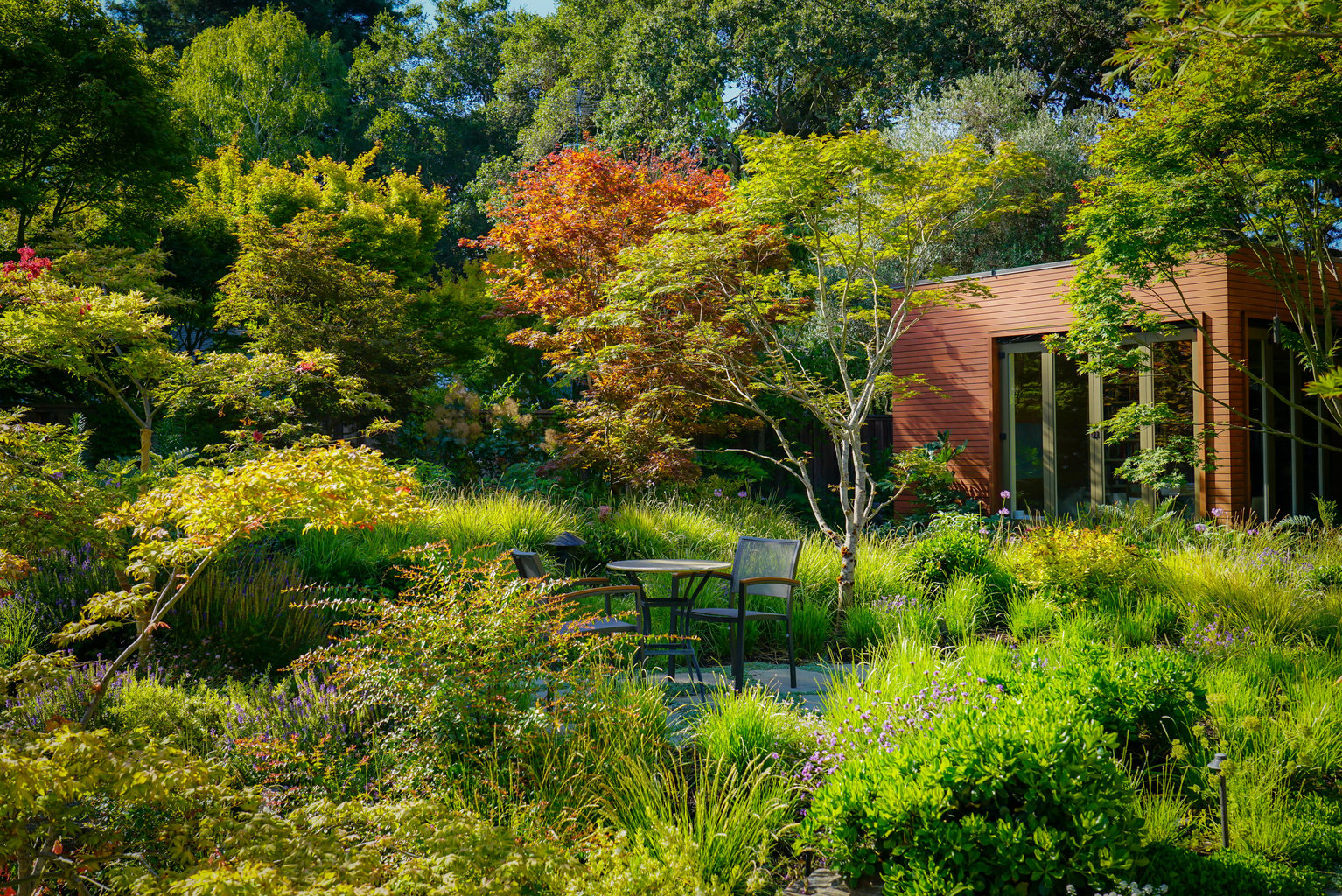
Seslerias: Versatile Groundcover Meadow Grasses
Summer 2022 Without question, the most beautiful and versatile of all the groundcover meadow grasses are the moor grasses (Sesleria). Moor grasses tick off all








Responses